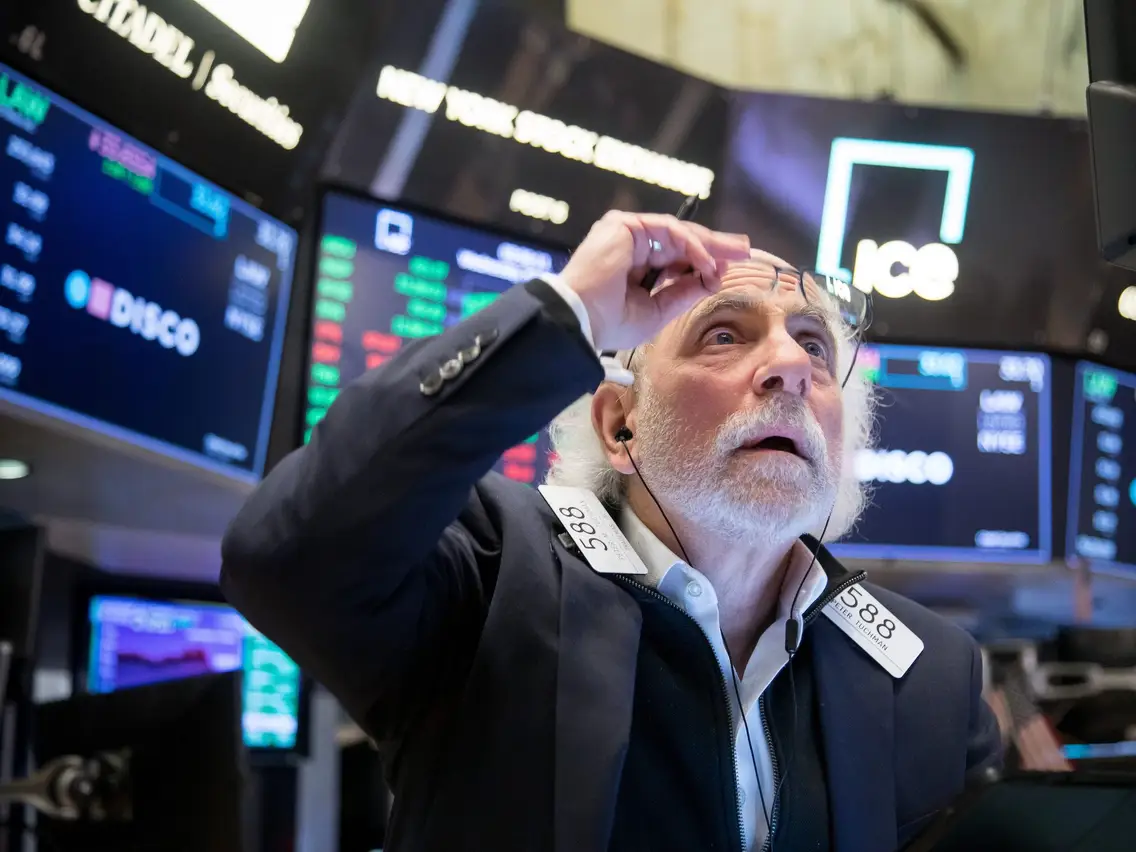Treasury yields have now been inverted for the longest stretch on record, with the spread between the 2-year (US2Y) and 10-year Treasury (US10Y) underwater for close to two years. It’s got everyone worrying about a troubling recession, though many of those calls have moderated in recent months as the U.S. economy continues to expand, unemployment remains low, and a soft landing increasingly looks like it will be in the cards. Is the indicator, which has predicted every recession over the past 50 years, faulty or broken?
Yield curves typically slope upward, so when short-term yields return more than longer-dated ones, it suggests there is reason to worry about the long-term economic outlook. It can also signal that the high levels of short-term yields are unlikely to be sustained as growth slows, which can have an impact on a range of asset prices. Investors usually factor in Fed rate cuts under those dynamics, with easing expectations signaling the potential for a faltering economy.
While some think the yield curve is no longer a reliable indicator, others point out its stark accuracy. The second-to-last time the yield curve inverted was in August 2019, which happened ahead of the pandemic-induced recession, and the 2y10y inverted again in March 2022, just before a technical recession emerged in the second quarter of that year. Any decision on a formal recession is left up to NBER’s Business Cycle Dating Committee, which has been responsible for setting the dates of peaks and troughs of the U.S. economy since 1978, but since it was never formally declared, it kept investors waiting for another one to happen.
The Fed’s infamous “transitory” call on inflation, a stock rally that has confounded Wall Street, and most recently – expectations for rate cuts – are all among recent predictions that have led many investors astray in recent years. Economists and mainstream analysts have to check their report cards, and recession talk might be the next failed projection. Is it different this time around? Or is a recession bound to happen eventually, it may just take more time?
The Fed
Interpreting public hints offered by Federal Reserve officials isn’t easy, but Bloomberg has a computer model that tries. It uses “natural language processing” to classify speeches and comments as either hawkish or dovish, then produces the index shown here. Readings above the zero line indicate a desire to tighten policy; below zero suggests they lean toward looser policy, i.e., lower rates.

Not surprisingly, the index shows peak dovishness in 2020, then a quick jump back to neutral territory, followed by a slower move to very hawkish rhetoric in 2021-2022, which gradually diminished as Fed leaders began considering whether to relax their antiinflation stance. The interesting part here is the latest move never quite reached “dovish” even though Wall Street was sure rate cuts were coming. Now it’s going in the other direction. Not a good sign if you’re betting on lower rates.
US Economy
- Real consumer spending unexpectedly fell in April, indicating a slowdown in US economic activity.

- Spending on goods declined, whereas gains in expenditure on services continued to slow.
- Here are the spending changes by sector.

- The weakness in consumer spending has led to a reduction in the Atlanta Fed’s GDPNow estimate for the current quarter’s growth.

- The Chicago PMI showed further deterioration. What’s driving this massive decline is not entirely clear.

- The ISM Manufacturing PMI moved deeper into contraction territory in May as demand softened.

- However, factories are hiring again.
- Construction spending in manufacturing hit another record high, driven by investment in semiconductor facilities.
- Weaker construction spending, combined with softer consumer spending on goods, pulled the Atlanta Fed’s GDP tracker further down (lowering the “fixed investment” component). The indicator is now below 2% (annualized).

- Bloomberg’s economic surprise index is near the lowest level since 2019.

- The market pricing for Fed rate cuts in 2024 moved to 42 bps.
- Softer economic data is pressuring the US dollar.

- Job openings declined significantly in March and April, suggesting an easing of labor market imbalances.
- Bloomberg’s economic surprise index hit its lowest level since 2019. The index of growth indicators is in contraction territory.

- Factory orders were up for the third month in a row in April. S&P 500 companies are becoming less dependent on imports from China.
- The May ADP private payrolls report was softer than expected.


- The ISM services PMI jumped last month, signaling stronger business activity.
- The market is settling on two Fed rate cuts this year.
- Mortgage applications remain at multi-year lows.

- Credit card delinquencies have been rising.

Market Data
- The divergence between the S&P 500 and the Dow has been widening, primarily driven by tech megacaps.

- June often starts with a rally in US stocks, only to fizzle out by month’s end.

- The S&P 500 concentration has been intensifying.
- Capitalization:

Source: Truist Advisory Services
-
- Performance:

Source: Heather Burke, @TheTerminal, Bloomberg Finance L.P.
- Hedge funds have been rotating out of software into semiconductors.

- AI adoption rates:

- D-Day invasion forces and equipment overview:

- Unlike during the dot-com bubble, Nasdaq 100 prices currently align with fundamentals.

- The chart shows the average magnitude of fragility events over time, with the highest magnitude recorded in 2024, suggesting that the largest stocks in the S&P 500 are currently experiencing more extreme price movements than at any other time since 1992. A fragility event is characterized by a stock price movement that is more than three standard deviations away from the mean.

Great Quotes
“Whatever the mind of man can conceive and believe, it can achieve. Thoughts are things! And powerful things at that, when mixed with definiteness of purpose, and burning desire, can be translated into success.” – Napoleon Hill
Picture of the Week
Masoala National park, Madagascar.

All content is the opinion of Brian Decker






